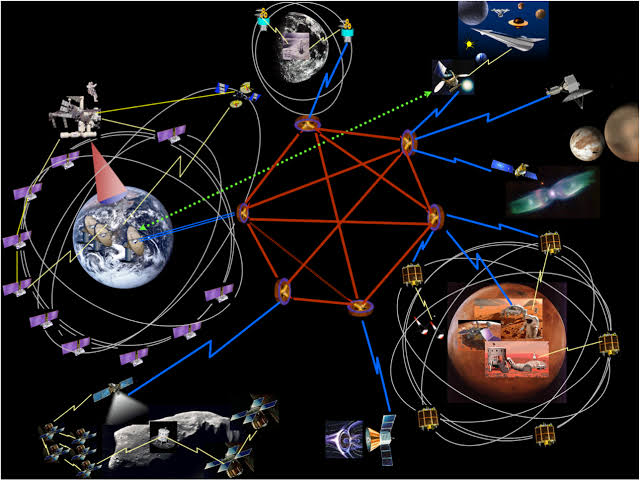Bridging the Interplanetary Gap: Challenges and Innovations in Martian Communication

As humanity sets its sights on the prospect of astronauts landing on Mars in the not-too-distant future, the challenge of establishing a robust communication infrastructure becomes increasingly apparent.
Communicating across the vast expanse between Earth and Mars, spanning anywhere from 55 million to 400 million kilometers, poses a unique set of challenges that demand innovative solutions.
Claire Parfitt, a systems engineer with the European Space Agency (ESA), emphasizes the crucial role of a well-established communications infrastructure for human missions to Mars. Researchers are diligently exploring various strategies to upgrade existing networks and exploring avant-garde alternatives to overcome the limitations imposed by distance and communication lag.
One pioneering initiative involves testing interplanetary communication using lasers. NASA’s Psyche mission, currently on its way to explore an asteroid between Mars and Jupiter, carries the Deep Space Optical Communications (DSOC) technology. This technology, utilizing lasers, holds the potential to transmit far more data than conventional radio waves, marking a significant leap in communication capabilities.
However, the inherent time lag in communications between Earth and Mars remains a formidable obstacle. Messages traveling at the speed of light take between four and 24 minutes for a one-way trip, rendering instantaneous communication, like a quick ping or a WhatsApp call, unfeasible. Moreover, the periodic solar conjunction, when the sun obstructs direct communication between the two planets, adds another layer of complexity.
Vincent Chan, a researcher specializing in fiber-optic and satellite communications at MIT, envisions local communication on Mars not posing a significant challenge. Existing technologies, such as radio frequency and wireless technologies, could facilitate communication among astronauts. Mini cell towers and relays could serve this purpose, offering a viable solution for close-range interactions.
Yet, challenges emerge when astronauts are dispersed over larger distances. In such scenarios, ground-based antennas pointing toward Earth and orbital relays similar to the Mars Relay Network become crucial. The ESA is exploring ways to enhance the existing relay network, considering the Mars Communication and Navigation Infrastructure (MARCONI) concept. MARCONI envisions communication and navigation-related payloads deployed into orbit around Mars, acting as nodes for radio communication and optimized for future missions.
The prospect of utilizing lasers for space communication introduces a revolutionary dimension. Psyche’s successful data transmission using lasers from a distance of 16 million kilometers demonstrates the potential of optical communication. The increased data-carrying capacity of laser links could be a game-changer in interplanetary communication.
Tobias Pfandzelter and David Bermbach of Technische Universität Berlin propose an intriguing idea—an independent Martian internet. Similar to Earth’s internet, a fleet of satellites orbiting Mars could create a local communications system, bypassing the need for an expansive ground-based network. This offshoot internet, resembling SpaceX’s Starlink, could leverage low Earth orbit satellites to provide planetwide coverage.
While the vision of astronauts streaming movies on Mars may seem futuristic, planning for these communication challenges is already underway. Initiatives like Psyche’s laser communication experiments, MARCONI’s proposed enhancements, and the exploration of Martian internet concepts indicate a proactive approach to address the intricacies of interplanetary communication. As technological advancements progress, the vision of a seamlessly connected Mars, akin to Earth’s internet experience, inches closer to reality, promising to reshape the future of human exploration beyond our planetary boundaries.


